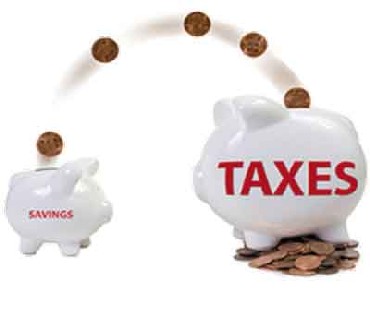Photographs: Illustration: Uttam Ghosh Ashish Pai in Mumbai
An ideal portfolio depends on a person's risk appetite, cash flow requirement, goals, and the investment's liquidity and tax efficiency.
Take Ashwini Mugad, 25, a software professional. She read that at a young age it pays to be in equities, as the ability to take risk is higher.
Six months earlier, she began investing in stocks. Her portfolio depreciated by 30 per cent after the telecom (2G) controversy hit the headlines.
...
Looking for an ideal portfolio? Read this
Image: Earn more money.Photographs: Reuters.
"This was my first step towards building a portfolio. I realised that being conservative is better, despite the age," says Mugad.
Actually, she did many wrong things. An ideal portfolio is a mix of investment avenues that help minimise risk and maximise return. It is a means to achieve desired financial goals by using financial instruments efficiently.
Asset allocation: The first step is to decide allocation between asset classes. The demarcation depends on the risk tolerance and time horizon of the goal.
Looking for an ideal portfolio? Read this
Image: Stock brokers disappointed.For example, someone starting out should look at balanced funds or exchange-traded funds. When the investor understands the risk-return associated with equity and debt, he or she could increase or decrease exposure to the asset class.
Asset allocation works only if the investor shifts the gain from one to the other, to maintain the balance.
Looking for an ideal portfolio? Read this
Image: Stock market ticker.Photographs: Reuters.
On the other hand, if you are saving for buying a car in three years, keep the money primarily in debt.
If you have a financial goal with timelines attached like child education, marriage, and so on, it is best to keep money in debt. For longer tenure goals, one can look at equity - the longer the goal, higher the equity exposure.
Once three years away from the goal, keep shifting the equity investment to debt. This will help cut the volatility associated with equity.
Looking for an ideal portfolio? Read this
Image: Monitor your assets at regular intervals.
Looking for an ideal portfolio? Read this
Image: More money in your kitty.For example, some consider an optimal strategy to be inclusion of a mixture of stocks, with low, medium and high rates of volatility, several bond issues and a commodity or two.
When one type of investment experiences some downturn, the other types provide stability to the portfolio.
Looking for an ideal portfolio? Read this
Image: More stability to the portfolio.For example, some consider an optimal strategy to be inclusion of a mixture of stocks, with low, medium and high rates of volatility, several bond issues and a commodity or two.
When one type of investment experiences some downturn, the other types provide stability to the portfolio.
Looking for an ideal portfolio? Read this
Image: Invest in tax-sheltered investments.Another strategy that you can use to balance portfolio is to adjust in a gradual manner your portfolio using new funds to buy more of the underperforming assets. This technique may not be adequate for a larger portfolio.
Tax impact: Some strategies to consider on taxes include investing in tax-sheltered investments such as PPF, tax-free bonds and insurance. These help to minimise capital gains tax liabilities and make use of indexation benefits. Suppose you invest in PPF: your actual yield, computed pre-tax, is around 11.4 per cent for a person in the 30 per cent tax bracket.
The writer is a freelancer.










article